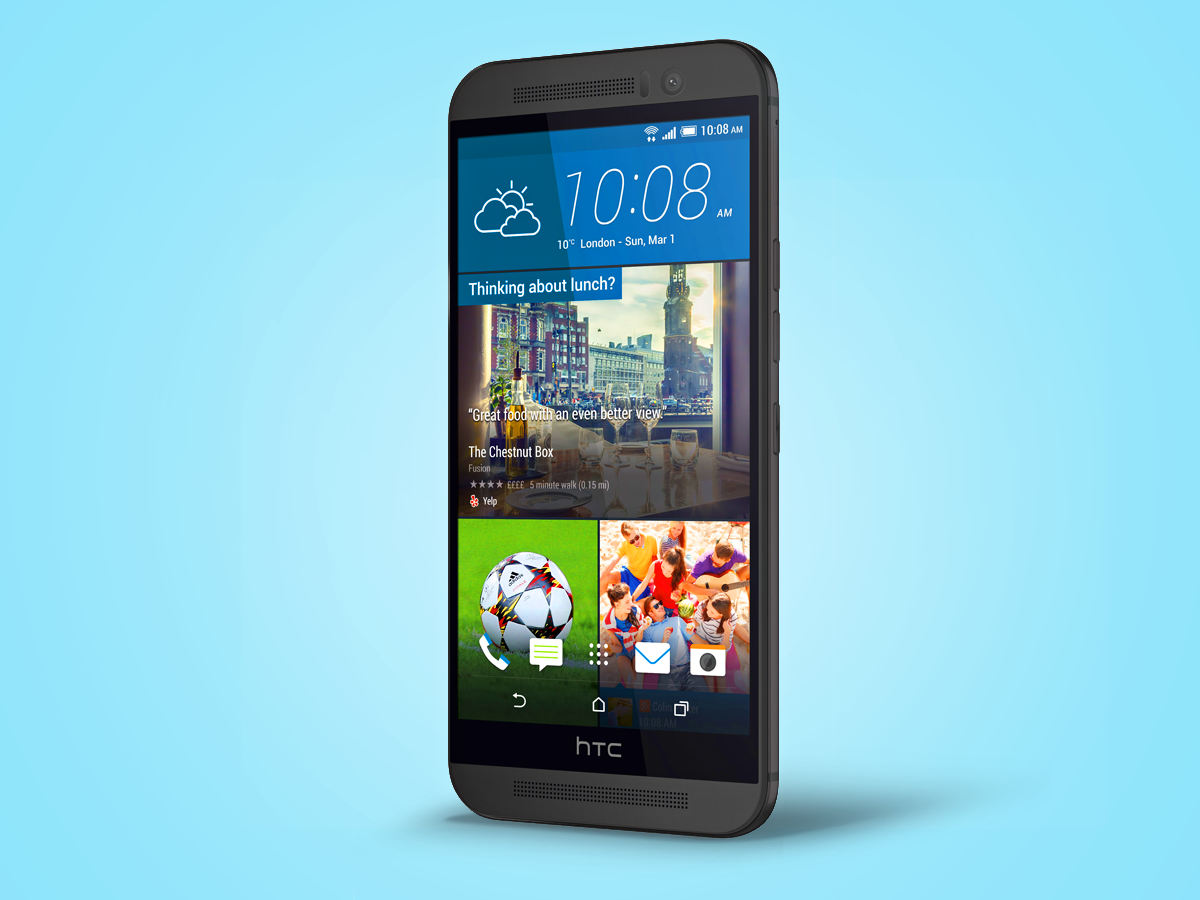
- T MOBILE HTC ONE M9 REVIEW 1080P
- T MOBILE HTC ONE M9 REVIEW FULL
- T MOBILE HTC ONE M9 REVIEW ANDROID
- T MOBILE HTC ONE M9 REVIEW BLUETOOTH
This year, HTC's betting on Qualcomm's latest 1.5GHz Snapdragon 810 processor, while Samsung opts for a homegrown Exynos chip.
T MOBILE HTC ONE M9 REVIEW ANDROID
Performance and Android Qualcomm dominated last year's flagship smartphone lineup, leading to very equitable and predictable scores all around. The M9 also supports MHL, and I was able to mirror the phone's display onto Sony and JVC HDTVs using an appropriate adapter (not included).
T MOBILE HTC ONE M9 REVIEW BLUETOOTH
Rounding out the connectivity features are Bluetooth 4.1, NFC, and GPS, all of which worked fine. While it's not going to displace the Note Edge, it did fare better than an Apple iPhone 6, which averaged 14.14Mbps down and 15.25Mbps up on the same test. Connected to the same speedy FiOS 5GHz Wi-Fi network, the M9 only managed 19.24Mbps down and 19.19Mbps up. The Note Edge is still the Wi-Fi king thanks to its MIMO antennas, which enabled speeds that averaged a blazing-fast 111.18Mbps down and 76.99Mbps up. On Wi-Fi, the story isn't quite as positive for the M9, which supports dual-band 802.11b/g/n/ac networks. Curiously, the M9's uplink speeds dropped to 0.62Mbps versus the Edge's 5.03Mbps. From there, the M9 averaged 8.73Mbps down to the Note Edge's 3.94Mbps. Moving to an area with poor service, the Note Edge dropped down to HSPA+, while the M9 was able to cling to the LTE signal. From a spot with good LTE reception, the M9 averaged 13.8Mbps down and 16.42Mbps up, compared with the Note Edge's 11.5Mbps down and 8.33Mbps up. The results were very positive for the M9, showing both stronger LTE reception and speeds. I tested network speeds against a T-Mobile Samsung Galaxy Note Edge, which was one of the better performers when we reviewed it last year. The M9 supports T-Mobile's Wi-Fi calling feature, which worked without issue in my tests, as well as HD Voice calls when available. For more tame environments, the M9 was able to effectively dampen outside interference. Noise cancellation was simply average in my tests on an especially loud street corner, I could still hear a good deal of background noise as cars whizzed by, and my voice sounded wobbly on a voicemail test. Transmissions through the mic weren't the clearest I've experienced, but the M9 did a good job of preserving natural voice tones.
T MOBILE HTC ONE M9 REVIEW FULL
Earpiece volume is strong, and voices coming through the other end of the line sounded full and easy to understand. HTC doesn't have as strong of a track record as Samsung when it comes to call quality, but the M9 performed well in my tests. The standard "BoomSound" sculpting now has multiple profiles courtesy of Dolby, and you can actually hear a difference between Theater and Music modes whether you're using the built-in speakers or headphones. The bottom-mounted headphone jack has some serious power behind it, driving my usual pair of headphones noticeably louder than the maximum volume I'm used to. Since I don't think anyone really expects clean and accurate audio from their phones, I'll take a little boosted volume.

The drawback here is mild distortion, which isn't an issue on the M8. Really, though, you'll never notice these deficiencies unless you're constantly comparing displays.Įditors' Note: The slideshow below is of the unlocked One M9, which is physically identical to the T-Mobile model.įlanking the top and bottom of the display, the signature front-facing speakers appear unchanged, but actually sound a touch louder compared with the speakers on the One M8. It also can't match the Galaxy S6 in terms of brightness, color richness, and contrast.

Whites look a bit cool on the M9 compared with the iPhone 6's clean, stark color. In side-by-side tests, though, it lags behind the Apple iPhone 6 display in terms of brightness and color reproduction. It's not as excessively sharp as Quad HD displays, but it's still top-notch.
T MOBILE HTC ONE M9 REVIEW 1080P
The 5-inch, 1080p LCD remains visibly unchanged from last year. This is still the best-looking, best-handling Android smartphone available. Don't mistake iteration with an absence of improvements.

The Power button is finally on the side, rather than the top, and properly textured to differentiate it from the neighboring Volume buttons. Small details like sharper, more squared-off edges and a welcome tackiness to the finish help the M9 feel far more secure in the hand. I love its subtle, two-tone look, and the brushed finish is every bit as luxurious as last year's model, if not more so. The basic formula is the same, but the M9 feels more precise and meticulously thought out than ever.


 0 kommentar(er)
0 kommentar(er)
